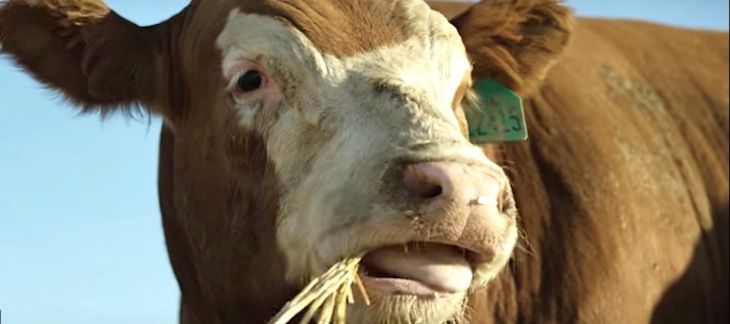Beef industry rebrands with multimedia campaign geared toward Millennials
by October 9, 2017 7:02 pm 773 views

A full generation has passed since the U.S. beef industry launched its “Beef. It’s What For Dinner” campaign, but the sector’s largest trade group — the National Cattlemen’s Association — is reintroducing the brand to the millennial generation with a “Rethink the Ranch” marketing campaign.
“Consumers love beef, and as with all foods, today’s consumers want the whole story about the beef they buy,” said Alisa Harrison, senior vice president, Global Marketing and Research, National Cattlemen’s Beef Association. “Our research shows that the ‘Beef. It’s What’s For Dinner’ brand is still extremely popular among consumers, including millennials. So, in honor of its 25th anniversary, we have refreshed the brand and updated our resources to make beef information available to consumers where they want it, when they want it and how they want it.”
The campaign launched Oct. 9 and features behind the scenes videos of various beef operations to provide more transparency to consumers who are more demanding about where the products they eat originate (See one of the video at the end of this report.).
Three ranches are highlighted in videos and a Tyson Foods’ beef packing plant. The short video presentations show ranchers as tech savvy men and women who use drone technology to count and track the cattle on a large ranch in Parkfield, Calif., as well as smaller cow-calf operations like the Triple U Ranch in Washta, IA., There are two videos that look down the supply chain to feeding operations at a large feedlot in Pasco, Wash., that specializes in beef nutrition and the meat packing facility of Tyson Foods located in Dakota City, Neb.
“Beef is one of the most popular foods among consumers, whether it’s your favorite steak or burger. But it can also be one of the most confounding, with questions ranging from the right cut, to the right way to cook it to where it came from,” said Harrison. “That’s why we wanted to make beef easier to enjoy. We’re setting out to answer the biggest questions that consumers have about beef, all in one place.”
The campaign site also features recipes, tips for cooking specific cuts of beef as well as nutritional information to help consumers have the confidence they need to purchase and prepare more beef.
BEEF CONSUMPTION
The U.S. Department of Agriculture reports Americans ate an average 55.6 pounds of beef last year, compared to 54 pounds in 2015. Overall beef prices have come down the past year after record highs resulting from low herd counts for much of the past decade. USDA said beef consumption fell 15% from 2006 to 2016 as beef prices increased 50%.
Economist Altin Kalo with Steiner Consulting said the tide has turned for beef after some dismal years on the heels of the recession and the low herd count.
Harrison said much time and travel went into the campaign to share the stories about the real people who raise beef because consumers want to know more about what they are eating. With each new generation consumers become more removed from the farm which puts the pressure on trade groups to educate and inform the public.
“Today’s farmers and ranchers blend time-honored traditions with cutting edge innovations to raise beef, from drones and GPS tracking on the range to apps and other electronic tools that ensure precise and nutrient-filled rations in the feed bunk,” she said. “Later in the year, new advertisements that celebrate beef’s unique qualities as a protein source will launch to appeal to consumers’ genuine love for beef, along with virtual tools such as 360 degree videos that show how beef goes from pasture to plate.”
National Cattlemen’s Association said they chose the digital format because it resonates well with consumers.
AUGUST EXPORTS
Also Monday, beef export numbers were released for August which showed a 14.7% increase in beef exports over last year. Beef exports are a major component of the industry’s overall health which is considered good by most agricultural economists. Strong exports will become more crucial to support better prices for cattle as herd continues to expand.
Derrell Peel, Oklahoma State University Extension livestock marketing specialist, noted in his report Monday that beef exports increased year-over-year every month of 2017. He said year-to-date beef exports are up 14.5% from 2016 levels. Peel said exports to Japan rose 39.3% and Hong Kong imported 28% more U.S. beef in August. Exports to South Korea were were down 6.3% from a year ago. August exports to Canada rose 18.1% year over year to Canada and Mexico increased its beef imports 8.9%.
“For the first eight months of the year, exports are up to all of the major beef export destinations led by Japan with a 30.6 % share of beef exports; South Korea with 16.2%; Mexico with 14.8% Canada with 11.3% and Hong Kong with 10.1%. These top five markets accounted for 83% of beef exports for the January through August period, Peel said.
He the U.S. also imported 7.9% more beef in August from a year ago as demand remains high. Total beef imports for the first eight months of the year are down 2.8% from one year ago.
For the year to date, Canada has the largest share of U.S. beef imports at 23.2% followed by New Zealand at 21.8 %; Australia at 21.7%; Mexico at 18.8%; and Brazil with 5%.
https://youtu.be/zdRQm2BHpUs
